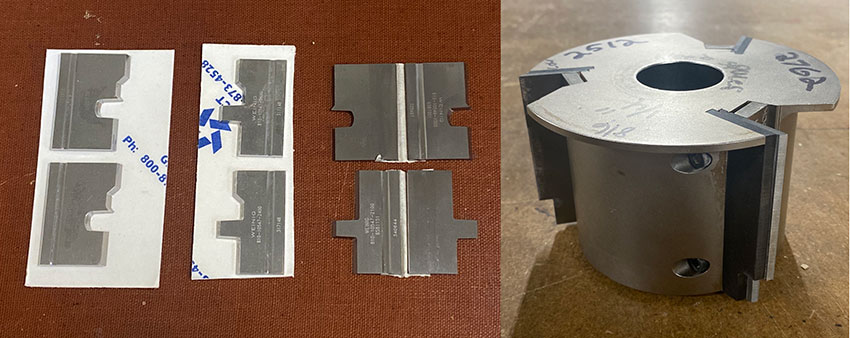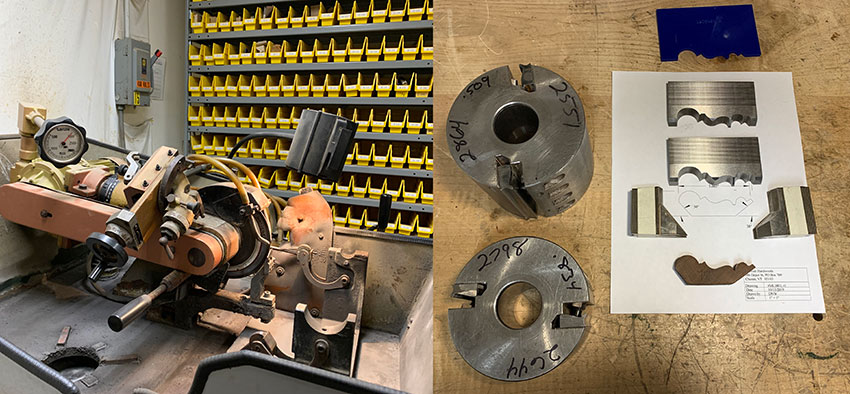
Moulders and How They Work
While each machine in the shop is an essential labor-saving device, the moulder is no doubt the most important. It takes the place of four conventional machines and does in one step what could easily take at least six and as many as ten or more. It is called a moulder, because it essentially “moulds” the shape by cutting away the excess wood needed to reveal the profile. This process happens on all four sides of a previously prepared board in one pass through the machine.
We use moulders made by leaders in their field. Our heavy duty Kentwood is used for flooring and mouldings up to 13” x 6” (see below, moulder on left) while our smaller Weinig is used to make picture frame and architectural mouldings up to 9” x 5” (see below, right):

The tooling we use for frequently run items such as T-G wide plank flooring and high-volume picture frame mouldings is carbide insert tooling. This technology uses an indexed disposable blade made to very high factory tolerances to ensure repeatability, longevity, quick change overs and reduced maintenance:

The other type of tooling is a corrugated back high-speed steel knife which is sharpened in-house as needed. These are used for more intricate or lower volume shapes:

While very simple in concept, the modern moulder is quite complex, with multiple computers, sensors and automated setup devices. Of paramount importance are the safety features such as one which turns off the motors and even electronically brakes the cutters to a stop if a door is opened or limit switch is tripped while in operation:










